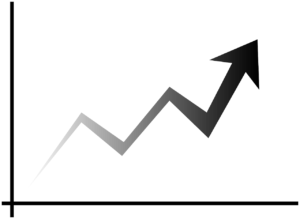The Dutch Health Department (RIVM) published their weekly coronavirus figures yesterday. These show that this virus continues to spread in the Netherlands.
The number of new infections almost doubled last week, to 2588. Nevertheless, the situation is different than in March and April. There are significant regional differences. It’s also come to light that it’s mainly young people who are transmitting this virus to the elderly.
We also know a lot more about how the virus is spreading. The Dutch Public Broadcaster, NOS, spoke to three epidemiologists who explained how the spread is now considered. And how that differs from knowledge when the pandemic first hit the Netherlands.
There are four main differences between then and now.
1. People without symptoms can transmit the virus
“Unlike influenza, people who have no symptoms can transmit the coronavirus anyway,” says Leiden University Medical Centre head of clinical epidemiology, Frits Rosendaal. That’s an essential part of the fact that the virus can spread so quickly among people. That’s according to Patricia Bruijning, an epidemiologist at the University Medical Centre in Utrecht.
“If you’re sick, you go to bed, and in principle, you don’t spread the virus. But, if you don’t feel sick and get on the train to go to work, you can transmit the virus.”
2. Under the right conditions, the virus seems to airborne
There is disagreement among scientists about the extent to which the coronavirus can spread through the air. However, there is increasing evidence that it is possible. Bruijning is, in any case, convinced of this.
“If you’re in a room, you breathe in each other’s air. If that person’s infected, contamination can occur. That’s why there is such a big difference between the number of infections outside and inside. And that’s why we emphasize good ventilation.”
3. The reproduction number is skewed
According to Rosendaal, the r-value can give a somewhat distorted picture. The r-value indicates how many people, on average, someone infected. “We know that value is very skewed.”
“There appears to be a lot of COVID-19 patients who hardly infect anyone. And then there are the ‘super-transmitters’. These few patients infect a lot of people. That’s why you occasionally see outbreaks in certain places.”
This is not unusual in the transmission of infectious diseases. But experts now know more about COVID-19’s exact dynamics.
4. Young adults’ role in spreading the virus is greater than expected

During July, in particular, epidemiologists collected more data. That was on the role of different age groups in the spread of this strain of the coronavirus. In the initial phase, there was a lot of uncertainty about this. This was due to the so-called intelligent lockdown.
Children, for example, didn’t attend school. “Children and teenagers then had little contact with each other. They weren’t infected and, therefore, could not pass on the virus.”
“Now we are in a completely different situation. We see that especially older teenagers and young adults are the driving force behind this pandemic,” says Bruijning.
“It’s understandable that young people want to get together. They can do that, but they should keep a physical distance from each other,” says Rosendaal. “After all, they have parents and grandparents whom they could infect.”
Still much unknown
It’s now six months down the line since the first coronavirus case in the Netherlands. Even so, there’s still much scientists don’t know for sure about the spread of the virus. For instance, it is still not entirely clear to what extent the virus can spread via surfaces.
The most recent research, on shopping trolleys, concludes that the chance is small. Epidemiologists also state that the discussion about the usefulness of masks is still ongoing, even in the scientific world. Additional research into the behaviour of the Dutch in relation to the established anti-corona measures would also be welcome, says epidemiologist, Arnold Bosman.
“In the beginning, there was a lot of talk about the Dutch national character – people would easily follow government measures. At the time, that was the assumption. Now, we have been able to make many more observations about how people abide by the rules.”
“Say we get a second wave in the autumn and winter. Then you want to know as much as possible about how people react to measures.”
Hoped it would be gone by summer
The three epidemiologists noticed that the number of infections rose in mid-summer. “The hope was that the virus would be almost gone by the summer. This happens with seasonal flu,” says Rosendaal.

“But that didn’t happen. He’s, however, not overly worried about the latest RIVM figures. “Measures are being relaxed, and behaviour’s changing.”
“So the number of infections has increased a little. Of course, it mustn’t last too long. On the other hand, the number of people who tested positive doesn’t give the whole picture.” You can’t just compare the situation now with March, according to Rosendaal.
“Back then, people who tested positive got sick to death in the hospital. Now the majority of people who test positive aren’t very sick. The number of hospitalizations is also still very low – we can handle that very well”.
Different view
Bruijn and fellow epidemiologist, Arnold Bosman, see it differently. “The number of infections continues to rise linearly. That can’t continue indefinitely.”
“The weather is nice, and most people are going outside now. Yet, it seems something is slipping through our fingers”, says Bosman. He and several other experts recently expressed concerns in a letter to Prime Minister Mark Rutte and Minister of Health, Hugo De Jonge.
Bruijning says, “We had hoped it was just a small resurgence. But we can now state it isn’t”. If measures aren’t better complied with, there may be a need for tightening them, she thinks.
Prime Minister Rutte and Minister De Jonge will give a coronavirus press conference tonight at 19:00. They will talk about the current state of the coronavirus in the country. They will focus on the situation in certain regions.
“If necessary, additional regional support measures will also be announced,” says the Government Information Service. This is the first time the Prime Minister has addressed the nation about this since 24 June.
Source: NOS
Translator: Melinda Walraven











